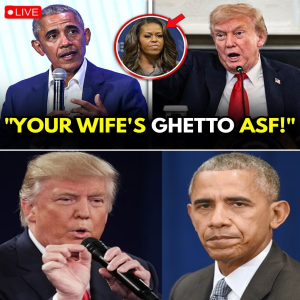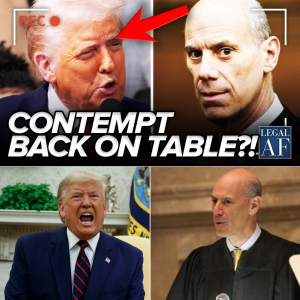A sensational—and completely fabricated—story involving Senator John Neely Kennedy, Representative Alexandria Ocasio-Cortez (AOC), Senate Majority Leader Chuck Schumer, and the entire Democratic leadership exploded across social media this week. The viral posts alleged that Kennedy “executed” the Democratic caucus in a verbal takedown during a live C-SPAN broadcast, leaving the chamber in “38 seconds of funeral silence.”
Despite the dramatic language and cinematic detail, no such confrontation ever occurred, according to congressional schedules, public broadcast archives, and official statements. But the fictional narrative spread with incredible speed, raising new concerns about AI-generated misinformation and the public’s growing appetite for political spectacle.

How the Hoax Began
The viral claim first appeared in a series of politically charged posts filled with sensational dialogue and action-film imagery. According to the fictional script, AOC was presenting a “Green New Deal 2.0,” described as a “$93 trillion climate justice plan,” when Kennedy allegedly rose with a manila folder labeled “DEM RECEIPTS – DO NOT BEND” and delivered a career-ending monologue.
None of these events happened.
Yet the exaggerated language, bold accusations, and emotionally loaded phrasing helped the story spread across TikTok, Facebook, X, and YouTube comment threads. Within hours, hashtags like #fblifestyle and #JohnNeelyKennedy were attached to memes, mock videos, and AI-generated imagery that added visual credibility to the fabricated confrontation.
Why People Believed It
Political communication researchers note that the Kennedy–AOC dynamic is one of the most potent ingredients for viral political fiction. Kennedy is known for sharp, humorous remarks during hearings; AOC is one of the most recognizable progressive voices in Congress. Their ideological contrast is so strong that many Americans expect confrontation—even when none occurs.
Several factors fueled the hoax’s believability:
1. Theatrical Dialogue
Lines like “funeral-quiet in 38 seconds” and “DEM RECEIPTS – DO NOT BEND” read like scenes from a political drama, not a legislative record. But the entertainment-styled writing was part of its viral appeal.
2. AI-Generated Content
Dozens of accounts shared edited clips, audio deepfakes, and staged screenshots designed to resemble C-SPAN footage. For many viewers, this visual reinforcement overshadowed the lack of factual evidence.
3. Polarized Audiences
Supporters and critics of both Kennedy and AOC circulated the narrative for different reasons—some as perceived triumph, others as outrage—giving the hoax traction across political divides.
4. Template Familiarity
The story followed a common online pattern: a dramatic “takedown,” an exaggerated silence, an angry walkout, and a viral hashtag. Audiences have seen this formula so often that repetition creates false familiarity.
Fact-Checking the Claims
A review of official congressional logs reveals:
-
No such Green New Deal 2.0 debate took place on the Senate floor.
-
C-SPAN archives show no confrontation resembling the viral script.
-
No Senate session included a 38-second halt due to partisan disputes of this nature.
-
No official Democratic or Republican statements referenced such an exchange.
The entire episode is confirmed to be an online fabrication designed for political entertainment, parody, or manipulation.
The Cultural Impact: Why These Stories Keep Appearing
The hoax sparked conversations far beyond its fictional narrative. Commentators and analysts observed that Americans increasingly turn to political fan-fiction—stories that blend reality, wish-fulfillment, satire, and misinformation—when traditional political discourse feels stagnant or predictable.
Three major themes emerged:
Political Entertainment
Many users admitted they shared or liked the story simply because it was “funny,” “epic,” or “wild,” even if untrue. Politics has become a storytelling arena, not just a civic institution.
Information Vulnerability
As AI tools improve, false stories become harder to distinguish from genuine news, especially when designed to mimic real congressional drama.
Faith vs. Facts
Supporters of one side or the other sometimes embrace narratives that emotionally resonate rather than those that are factually grounded.
The Real Danger: When Fiction Is Mistaken for Fact
Experts warn that viral political fabrications—especially those involving high-profile lawmakers—can have real-world consequences:
-
Erosion of trust in journalism
-
Increased hostility between political groups
-
Confusion about legitimate legislative actions
-
Misinformed voters heading into elections
When fictional political battles begin overshadowing real legislative debates, the public’s understanding of congressional function becomes distorted.
Conclusion: A Viral Lesson in Modern Political Myth-Making
The fictional story of Senator Kennedy “executing” Democratic leadership in a live Senate session reflects the power of viral storytelling—but also the risks of digital misinformation. As the 2024 and 2026 election cycles intensify, similar hoaxes are expected to become more frequent, more sophisticated, and more emotionally charged.
The episode is a reminder to all readers: verify before you share, especially when a story seems too explosive to be true.





